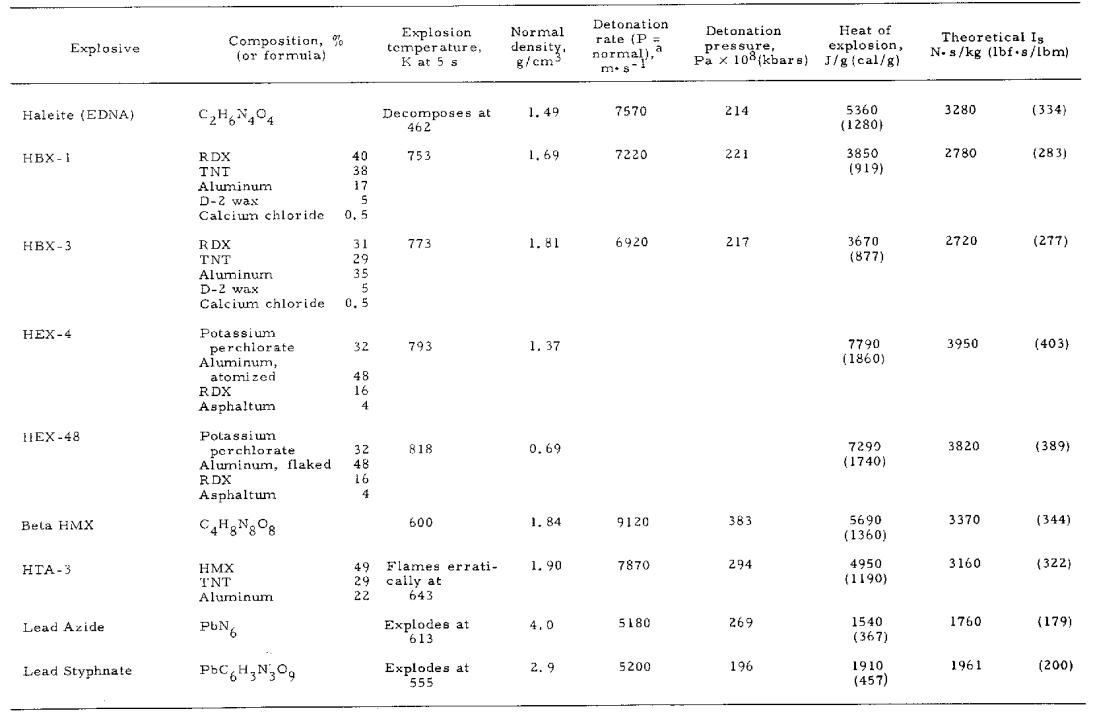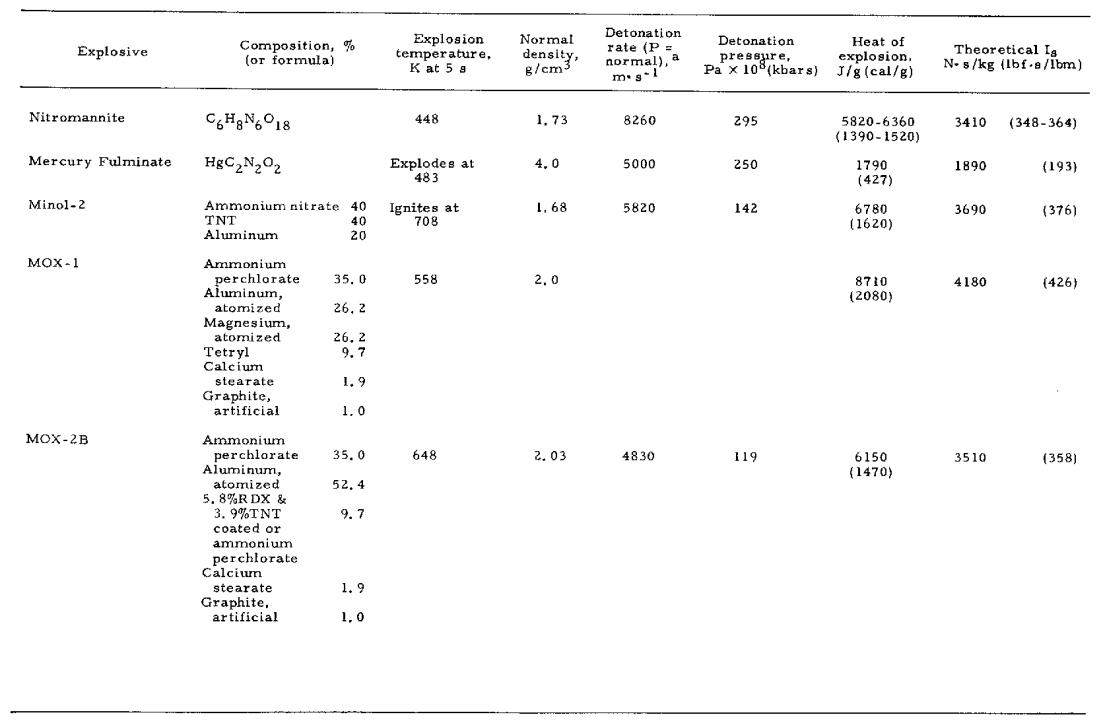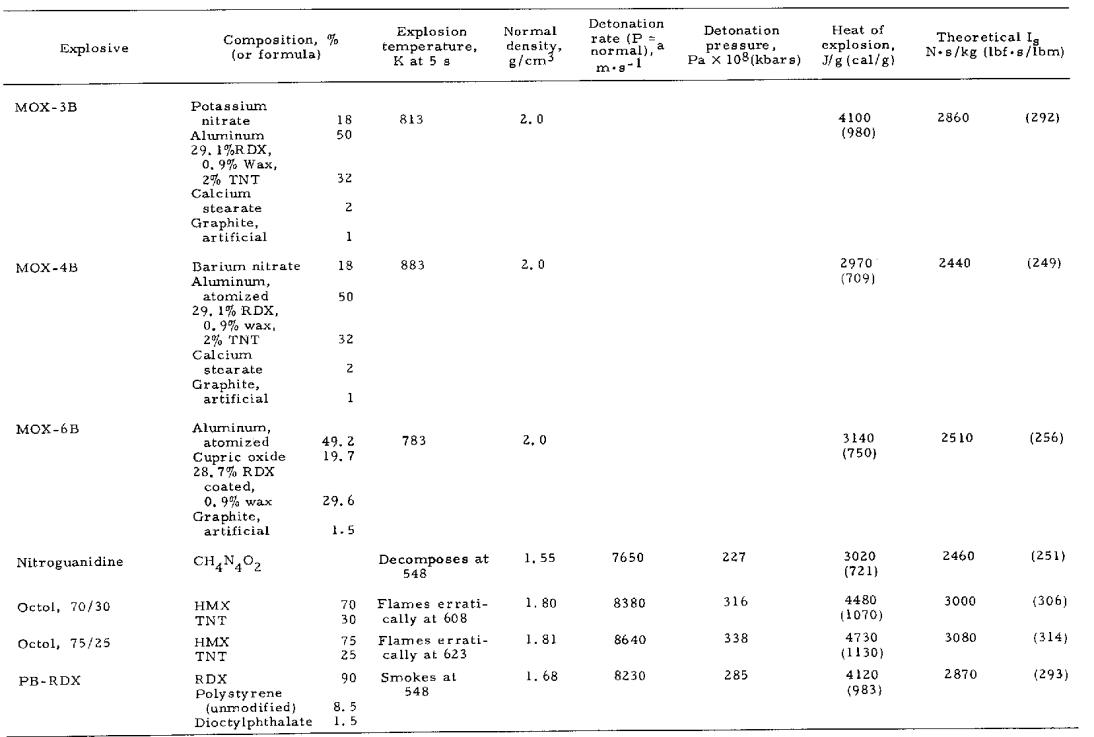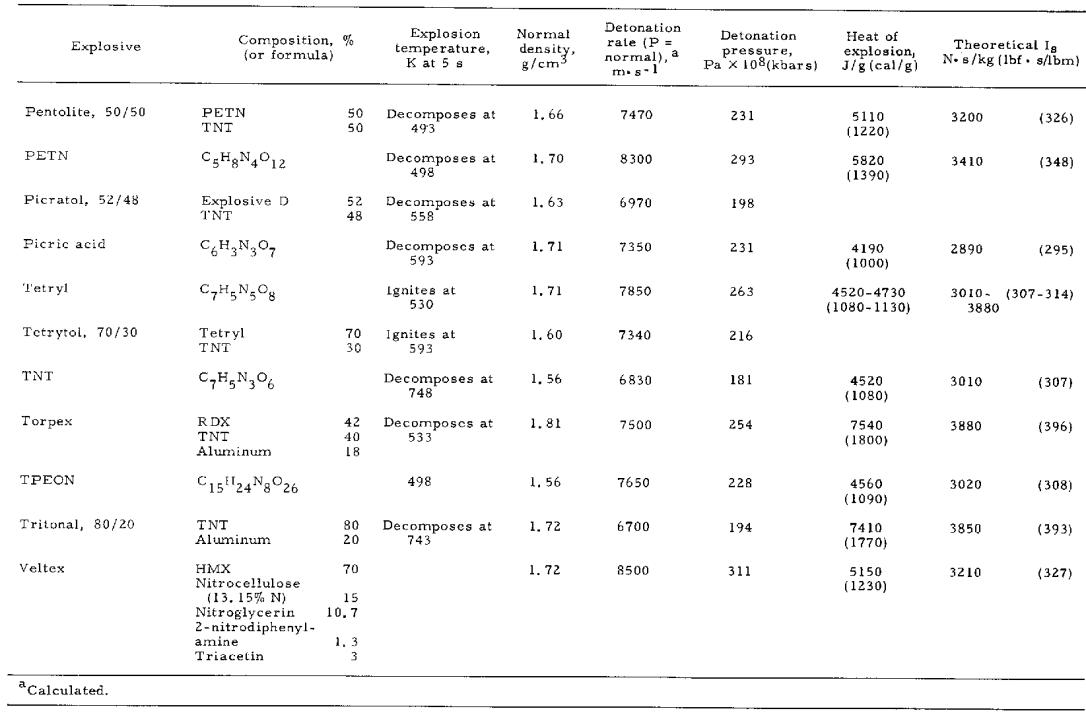The best known approach to using detonations as a form of space propulsion is the Orion, which uses nuclear bombs to provide a “kick in the pants” to a spacecraft. But over the years the use of conventional chemical explosives to drive a ship has also been proposed. Early on, in the era before Tsiolkovsky and Goddard, the use of gunpowder and dynamite bombs seemed to make a measure of sense. But after the 1920’s or so, solid and liquid fuel rockets proved themselves far superior to such crude explosive system. The specific impulse of even a mundane rocket typically well exceeds the Isp of an explosive system, with far less danger, complexity, weight and cost. Still, the idea continued to be of interest. Recently, “pulse detonation engines” have proven of substantial interest. These use conventional liquid propellants, but do not burn them in a continuous fashion… instead the propellants are mixed and then detonated. In this case, the explosive system provides *higher* specific impulses than the equivalently-fueled rockets.
But the use of dedicated high explosives for propulsion may still be of interest. Blog reader Michael Holt recently provided a link to a NASA document that discusses the concept and provides data tables on a wide range of proposed explosives. As expected, the Isp’s available are generally fairly unimpressive; note also that these are the theoretical maximums, with percentage losses certain.
One of the more impressive explosives listed is 1,3-diamino-2,4,6-trinitrobenzene (DATNB, C6H5N5O6). Density is a good 1.65 grams per cubic centimeter, and theoretical Isp is 501 seconds… well in excess of conventional hydrogen/oxygen.
Explosives as propellant offer a few advantages, but a lot of disadvantages. The three most important disadvatages:
1) The propulsion system must be considerably heavier and more complex than an equivalent rocket
2) The risk of the whole ship being blasted into vapor
3) Cost.
In my view, #3 is the killer. I don;t know how much it would cost to buy, say, one hundred tons of 1,3-diamino-2,4,6-trinitrobenzene… but I can’t imagine it’d be cheap. Even with the cost of petroleum far higher than it used to be, kerosene is still less than a dollar a pound. Explosives will always have a hard time competing with that.
6 Responses to “Explode your way to the stars”
Sorry, the comment form is closed at this time.






I wonder if a system similar to the old “dynamite guns” could work? an explosive charge is fired into a closed chamber, and the resulting pressure is held until used. might not work as primary engines, but as other thrusters a simple valving and piping would move it to where it was needed and the chamber could be “re-pressurized” as it was used.
basically a compressed gas system, only it uses explosives to produce the gas.
I could see it being used as a throwaway maneuvering system for something you’ll use once but has to sit stable for a long time like a missile interceptor.
Scott;
Funny you should post this :o)
I’ve been reading a paper on “External Pulsed Plasma Propulsion” which I referenced here:
http://up-ship.com/blog/blog/?p=5348
The idea was to surface launch an ORION using conventional explosives or SRBs, then “beam” power the the ships pusher plate by rapid-fire cannon.
Randy
i wonder can a Orion be launch this way ?
i mean conventional chemical explosives
in form of Shaped charge
that projects a high-velocity jet towards the pusher plate
> i wonder can a Orion be launch this way ?
Maybe for a few pulses, but certainly not to orbit. An orion needs about 1,000 pulses to get to orbit. Depending on the size of the vehicle, the yield need to be somewhere in the range of 0.1 to 5 kilotons per shot. This means a total yield in the range of 100 kilotons to 5 megatons. 100,000 tons of high explosive just ain’t gonna happen.
Plus there’s the problem that a chemical explosive with the same yield as a nuclear explosive will have *very* different effects upon the pusher plate and shock absorber
>Maybe for a few pulses, but certainly not to orbit.
it only to a high of 40km (25 miles) then switch on nuclear pulse
>a chemical explosive with the same yield as a nuclear explosive
>will have *very* different effects upon the pusher plate and shock absorber
i know
the nuke pulse produce a Plasma shockwave
the chemical pulse produce a supersonic shockwave
this can deform the pusher plate !
‘course the idea is not to get the ORION to orbit, just part way there and then they start using thier own on-board bombs to get the rest of the way.
Randy